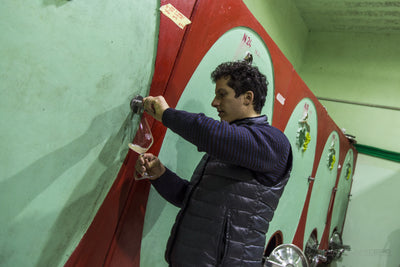Grudgingly (since I seldom get to drink it), I have to admit the reputation is to a considerable extent justified. The top ‘Cru Classé’, and the best ‘Cru Bourgeois’ Bordeaux wines in the right vintage, are among the most seductive wines you’re ever likely to try. These top estates work according to such an intensive quality regime, with obsessive attention to detail - from the management of the vineyard to the meticulous hand-sorting of the grapes to the long, patient ageing in the best quality oak barrels -that, even if you don’t particularly lean towards these styles of wine, you cannot but be turned on sensorially by the liquid in the glass.
But there’s a problem: with so many thousands of chateaux, and no fewer than 57 appellations, there you’ve got a lot to contend with. How do you tell which one will have dark blackcurrant, brambly fruit and which will be more on the red fruit – cherry, strawberry – spectrum? How do you tell which is going to be velvety and dense, and which will be more floral and elegant? In short – and this chimes very neatly with the title of this post - how do you tell what’sbehind the label?

Assuming you’re not a millionaire, trial and error is not a realistic option. But you can get something of a handle about the styles of red wine to expect from the principal appellations of Bordeaux from the nine wines representing the key appellations below.
Haut-Médoc - Haut-Médoc is huge, with vineyards at different ends of the Medoc with entirely different terroir, so it’s it’salmost impossible to generalise. What can be said is that Haut-Médoc wines favour Cabernet Sauvignon in the blend are normally better quality than those from AOC Médoc.
Moulis-en-Médoc - Moulis is slightly cooler than other appellations in the Medoc, with fruit that’s less hefty and ripe. Often leaning towards the red fruit spectrum but with the tannic structure to make them quite robust and age-worthy. You may find cherry and blackberry fruit expressed as much as the classic cabernet cassis.
Pessac-Léognan - Pessac-Léognan’s more southerly location means the cabernet ripens particularly well. You will tend to find larger proportions of merlot in the blend than in other ‘left bank’ (of the Gironde river) appellations, which gives a more rounded fruitiness to the wines.
Saint-Estèphe - Now we’re cooking. Saint-Estephe produces big, muscular, tannic wines with ripe, intense cabernet sauvignon character. For those who like broad-shouldered, intense claret, Saint-Estephe is your man.
Margaux - Soils in Margaux are among the lightest and most gravelly, lending the better wines from the appellation a silky texture, refined structure, and a perfumed nose of violets, voluptuous plum and tobacco leaf. These tend to be full-bodied clarets with a firm backbone of acidity.
Saint-Julien - St-Julien is sometimes seen as a halfway house between the velvety refinement if Margaux and the power of Pauillac. Cassis and cedar and generous texture tend to mark out the wines.
Pauillac -Pauillac is arguably the most revered appellation of all, home to three of the five First Growths (Latour, Lafite, Mouton-Rothschild) and the bastion of ‘traditional’ claret. Pauillac wines are noted for the power, structure and slowly unfolding complexity of flavours. Concentrated fruit is matched by subtle but firm structure and tannin.
Pomerol - On the right bank of the river Gironde, merlot dominates. In Pomerol the wines are generally rich, fruity and creamy in texture, with none of the tough tannins that can mark out wines from appellations like Saint-Estephe or Pauillac.
Saint-Emilion - Rich, ripe, chocolately-tobaccoey merlot (and, to a lesser extent, cabernet franc). Soils and styles vary, but as a very general rule, you’ll find wines that are richer and more concentrated than Pomerol, often with fruitcake spices.

